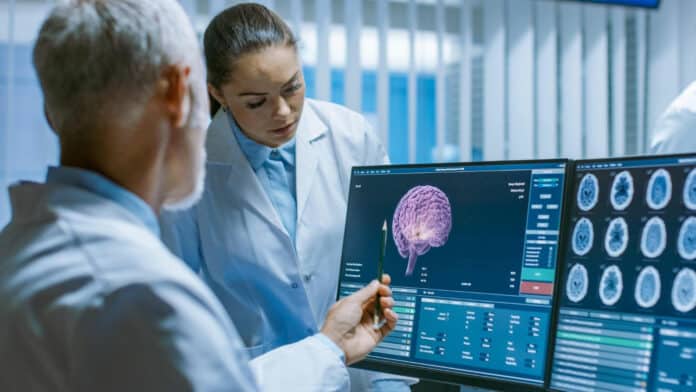Around 1,400 adults and 150 children in the Netherlands are diagnosed with brain or spinal cord tumors yearly. Surgery is often the initial treatment step. However, neurosurgeons can’t determine the exact type and aggressiveness of the tumor during surgery. The precise diagnosis typically comes about a week later, after the tumor tissue is examined by a pathologist visually and at the molecular level.
UMC Utrecht researchers have created a “deep-learning algorithm,” artificial intelligence that makes diagnoses faster. They used Nanopore sequencing, a real-time DNA reading technology, to develop an algorithm called “Sturgeon.” This algorithm can identify the tumor type within 20 to 40 minutes, allowing for quick adjustments to the surgical plan if needed.
Jeroen leads a “bioinformatics lab” with 15 computer scientists. They use advanced computer techniques like machine learning and artificial intelligence (AI) to study complex molecular data. This data comes from patient tumor samples stored in biobanks.
Jeroen said, “Modern technologies allow us to make enormously complex and rich measurements of, for instance, tumor biopsies. How do we ensure that that highly complex measurement data collection leads to new fundamental insights about cancer? And how can we use that collected data to diagnose better and treat cancer?”
“To answer these questions, it is essential to design algorithms that can analyze large collections of molecular data, and that is exactly what bioinformatics focuses on. Although our research is fundamental, we are driven to ensure that our findings will positively affect patient’s lives,” he added.
The entire process was tested multiple times during brain surgeries, from gathering tissue in the operating room to identifying the tumor type. In Utrecht, this was done with children and in Amsterdam with adults. The whole procedure took 60 to 90 minutes.
The Princess Máxima Center found the technique reliable enough to use with children to guide surgical decisions. Amsterdam UMC plans to use the method in their daily practice to expedite diagnoses.
Eelco Hoving, pediatric neurosurgeon, and clinical director of neuro-oncology at the Máxima Center, is enthusiastic about the potential of DNA analysis during surgery. He explains that a small part of the tumor is sometimes intentionally left during surgery to avoid neurological damage.
However, if it’s later discovered that the cancer is very aggressive, a second surgery may be needed to remove the remaining part, causing additional risks and stress for patients and their families. With DNA analysis during the first surgery, this can now be prevented as the tumor type is known right away.
To expand the use of this new technique, more research is necessary. This includes adding more tumor types to the algorithm to meet international standards for data comparison. Additionally, the outcomes of the new and current (slower) methods will be compared in collaboration with other centers, both nationally and internationally. This will help determine if the new process can improve patient’s quality of life in the long run.
Jeroen de Ridder expressed his excitement about combining expertise from different areas, from researchers to pathologists and surgeons, to make a real impact in brain tumor surgery and enhance outcomes.
The “Sturgeon” deep-learning algorithm has the potential to revolutionize brain tumor type identification, streamlining the clinical process. Integrating AI, pathology, and surgery expertise, this collaborative effort strives to enhance patient outcomes during brain tumor surgery.
Journal reference:
- Vermeulen, C., Pagès-Gallego, M., Kester, L. et al. Ultra-fast deep-learned CNS tumor classification during surgery. Nature. DOI: 10.1038/s41586-023-06615-2.
